TO GLAZE OR NOT TO GLAZE.
Including a recipe for a Christmas ham glaze - because you'll probably glaze, right?
The argument for glazing your Christmas ham is known to us all. A theatrically glossy leg of ham straight off the movie set is the goal here; with that little edge of sweet and bitter fruitiness brought home by variations on mustard, marmalade, maple syrup, apple cider, orange juice, ginger, etc.
There are some very big arguments for NOT glazing your Christmas ham, however.
The ham is already cooked (from the hot-smoking) and has the potential to dry out in the oven.
Glazing can be a pain in the butt. If it doesn’t brown and you need to up the heat and really slam it until it does, or if it runs off like rain on the roof, or if it burns, stress levels rise correspondingly.
You may simply prefer your ham cold or at room temperature, not hot or warm.
My caveat for going for the glaze:
As long as the ham is a good, well-cared for one that isn’t already over-cooked, you can get away with the time in the oven to set the glaze. It might even soften it up and get the juices running a bit, more so than when served cold.
An alternative to the glaze.
Once or twice, my mother would coat the entire surface of white fat with very fine golden breadcrumbs, made from oven-dried hunks of left-over bread. There may have been an initial slathering of mustard on the fat to help them stick; we can’t remember. Then it would be scored into diamonds, with a clove placed within each diamond. And that was it. No baking, no glazing. It looked magnificent, so pure and simple. And each slice had that lovely textural edge of soft crunch. I think Japanese panko crumbs would do the job in a snap.
There is, in fact, a Swedish Christmas ham that is coated in a mix of mustard and breadcrumbs, and actually baked. This requires further investigation.
For today, however, I’ve gone a little BBQ with a simple, smoky, tangy glaze of mustard, maple syrup, soy, and tomato sauce. If you want to glaze your ham, it’s fabulous. If you don’t, don’t.
A BBQ GLAZE FOR THE CHRISTMAS HAM.
2 tbsp Dijon mustard
2 tbsp butter
4 tbsp maple syrup
3 tbsp tomato sauce/ketchup
1 tbsp vinegar
1 tbsp soy sauce
1 tsp Worcestershire sauce
Chuck everything into a saucepan and bring to the boil, stirring.
Simmer, stirring for three minutes until it looks like sticky toffee sauce.

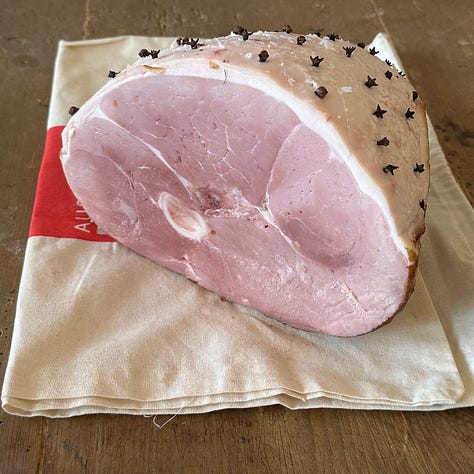
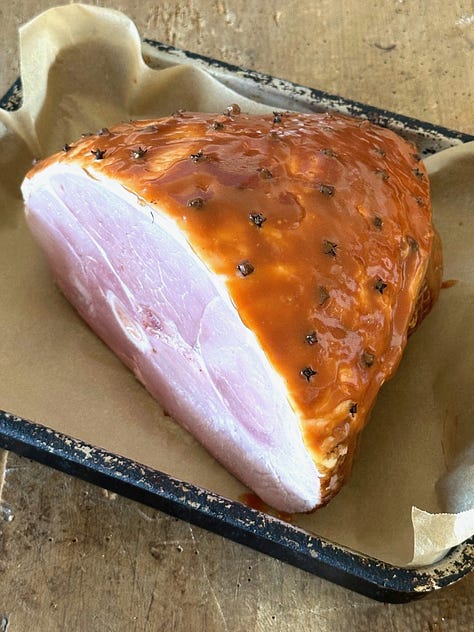
TO PREPARE THE HAM
1 beautiful smoked, bone-in, rind-on, leg of ham, around 7 kg
Handful of cloves
Heat the oven to 180C (160C fan-forced).
Use a sharp knife to cut the rind around the shank bone to release it, then run the tip of the knife around the rim of the rind to help loosen it.
Gently pull and tease the rind away from the meat, scrabbling your fingers beneath it and leaving as much fat as you can.
Score the fat with the tip of a knife without piercing the meat, and place a clove in the centre of each ‘diamond’ shape (an optional tradition but it does help the glaze to do its job).
TO GLAZE THE HAM
Place the ham in a large roasting tin lined with baking paper (because glaze burns).
Pour 1 cup of water in the base of the pan (because what did I tell you? Glaze burns).
Slowly pour most of the glaze over the top of the fat, turning the ham gently to encourage it to coat the entire surface. Cover up any gaps.
Bake for 30 to 40 minutes, basting with the remaining glaze every 10 minutes, until the ham is golden brown and just starting to catch and scorch at the edges.
Rest for 30 minutes before carving.
Tippy-tips:
I’m in favour of a short time (30 to 45 mins) in the oven at 180C, just enough to set the glaze. Others recommend a full two hours at 160C (conventional oven). It’s important to do one or the other, or you risk warming the centre of the ham to microbe-friendly temperatures, as the ever-helpful Nagi Maehashi explains here on Recipe Tin Eats. Thank you Nagi! (And thanks to the always delightful Ardyn Bernoth, long an editor of mine on Good Food, and recently released into the wild to do more great things, for bringing it to my attention.)
Keep the rind, and use it to cover the carved meat, then store the ham in a muslin ‘ham bag’ or clean pillowcase. Soak the bag first in 1 litre of water mixed with 2 tsp white vinegar, then squeeze out the mixture (resoak the bag every two days, and you can store the ham for a week.
If you have a half ham, as I have here, protect the cut side by covering it with a sheet of foil and securing it with toothpicks to stop it drying out.
My thanks to Lylle and Kylie at Australian Pork and all our hard-working pork farmers for bringing us such bounty. Special shout-out to the amazing team at Sunshine Meats for their award-winning double-smoked-over-beechwood, maple-infused ham; it’s a beauty.
Here it is here at the annual Australian Pork Christmas Breakfast at Martinez in Sydney as spicily glazed by the talented executive chef Alex Wong of Lana, Grana and the rest of the House Made Hospitality group. (Thanks for the coffee, Caelan!)
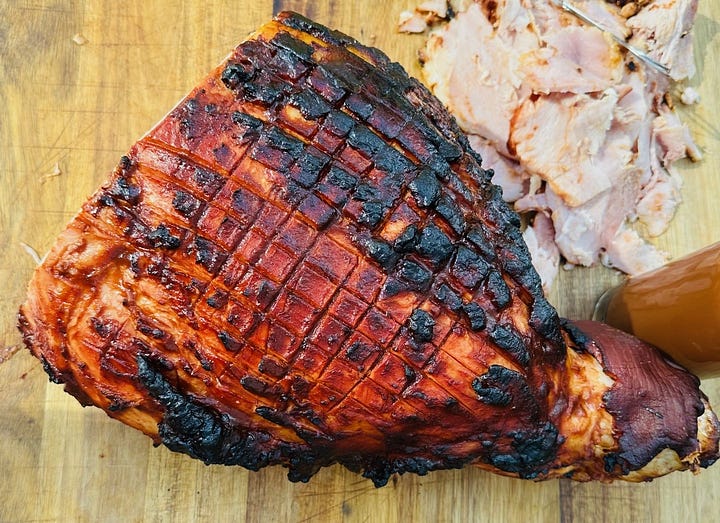
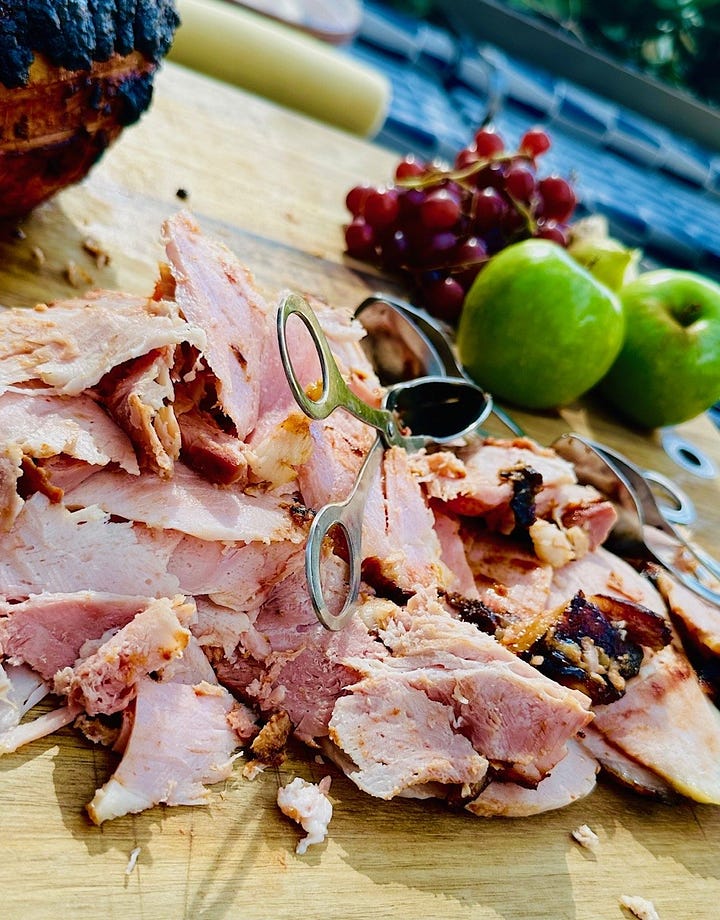
Thanks for dropping by! And as always, thanks for your comments and suggestions. Special thanks to Terry for carrying the ham home. Hero!
I would like to acknowledge the traditional owners of the lands and waters upon which I work, live, cook and play; the Gadigal people of the Eora Nation, and pay my respects to Elders past and present, and to the continuing strength and resilience of First Nations people, communities and cultures.



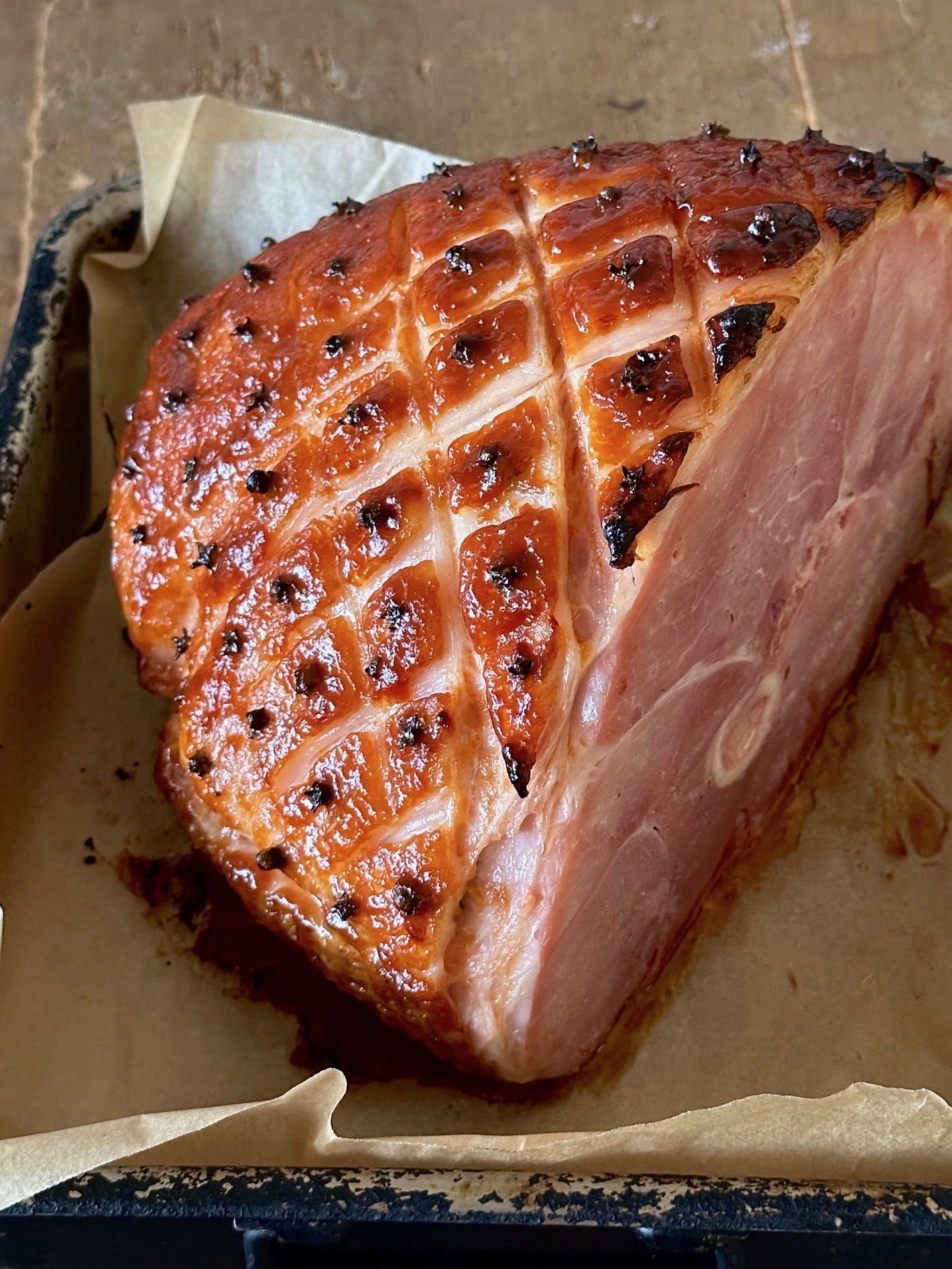
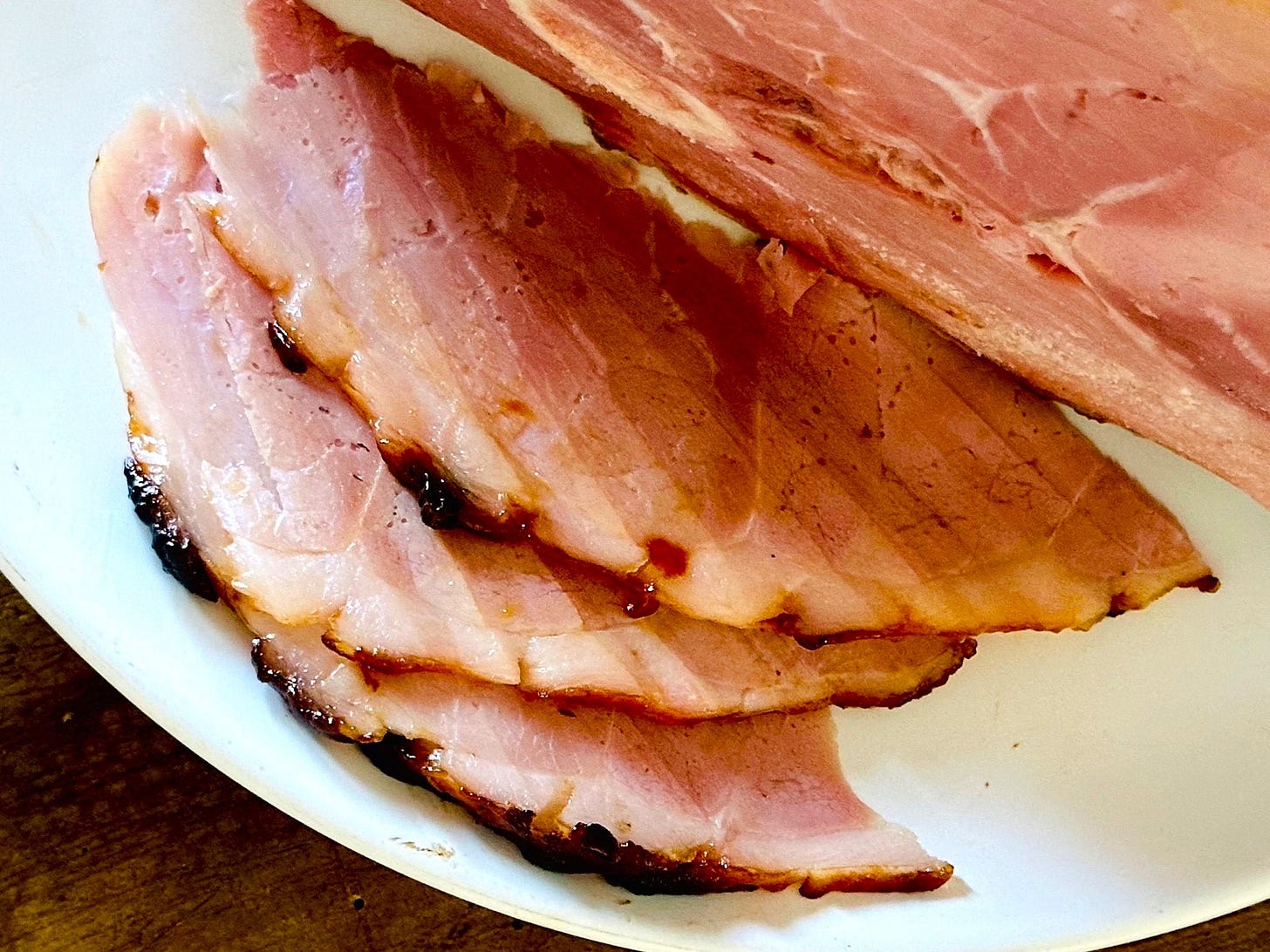
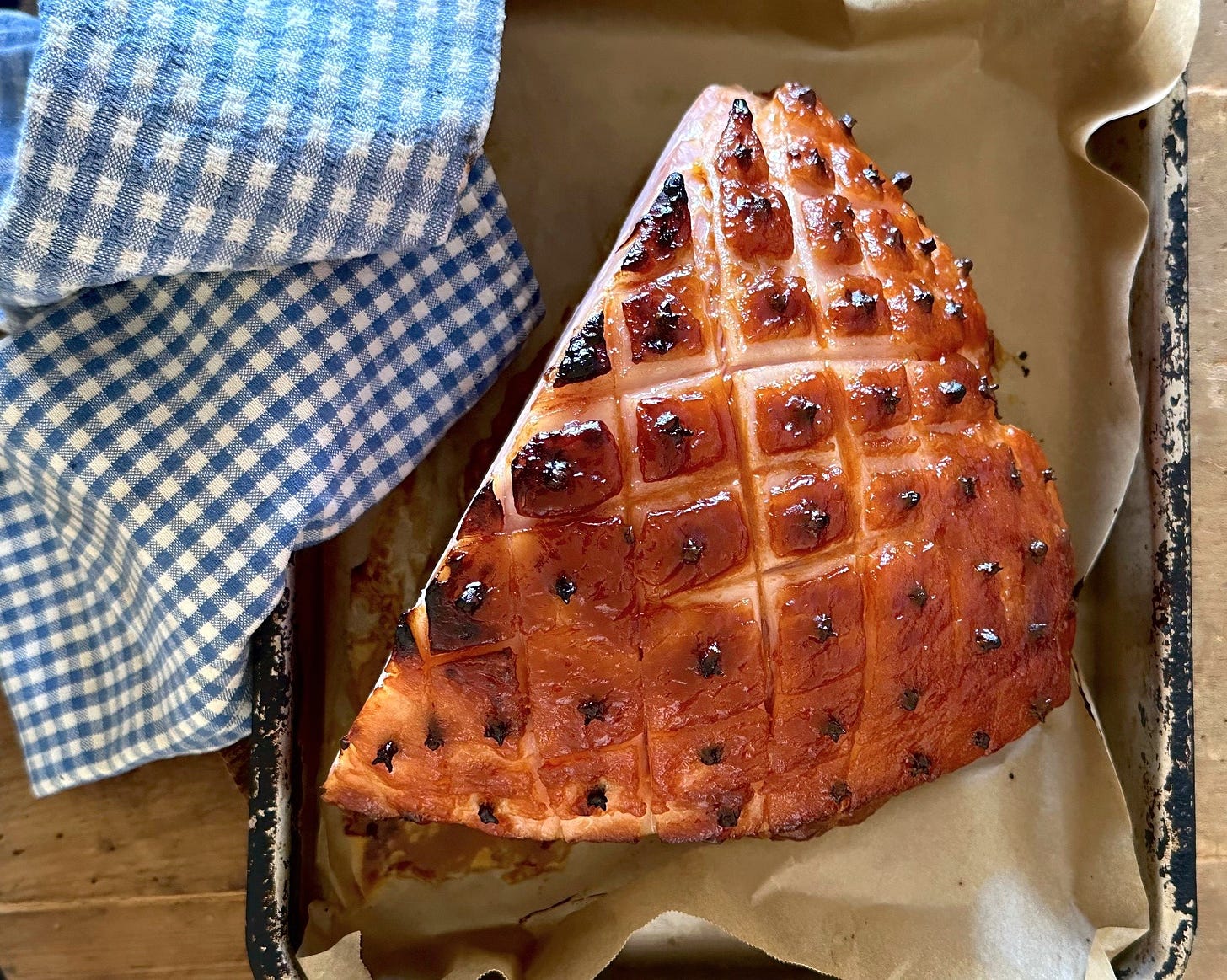

Oh how I wish for the days when it was up to me to provide the ham and I would decorate and glaze to my hearts content. These days our children are in charge and also we celebrate Christmas on Christmas Eve, so Christmas Day it is usually only the two of us or perhaps my sister in law and her partner, neither who eat pork. So once again it will be store bought ham, but the best I can find. Wishing you and Terry a Merry Christmas and all the best for Terry’s retirement. 🎄🍾🥂
Love your work Jill. Happy Christmas to you and your helpful elf. Thanks for a fabulous year